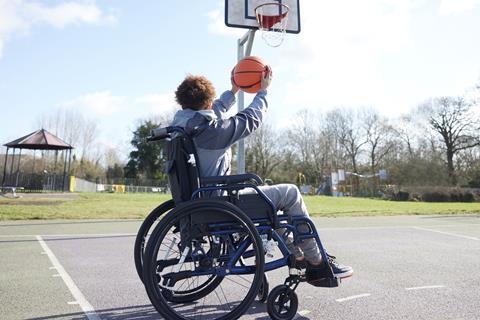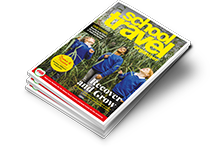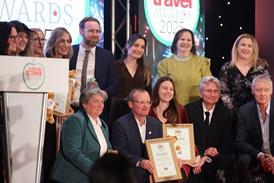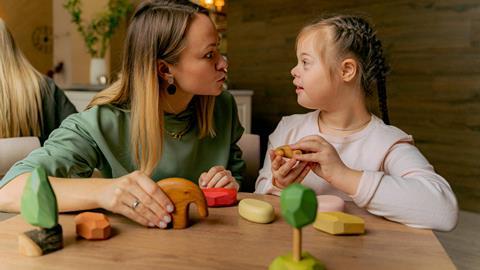We caught up with two educational visits coordinators about their approach to organising school trips for children with special educational needs and/or disabilities.

Leo Biles, EVC for ACE Tiverton School in Devon, explains the considerations that staff make when heading out.
We have a simple flowchart to follow when looking to take students off-site which starts with the question: ‘Is this trip routine and regular?’ If it is, we have a set of Standard Operating Procedures (SOP’s) which are shared online and digitally signed by staff which lists all the control measures we have in place to take students out in the local area. The SOP also contains all the medical needs for students, as well as other considerations when taking learners out of school.
Before any planning for a trip that is not ‘routine and regular’ can take place, staff need to complete an outline of the visit which is sent to the executive head, head of school, designated safeguarding lead (DSL) and EVC. This allows us to check the suitability of locations, staffing ratios, cover, transport and any costs.
Concerns or problems can be picked up at this stage, and it is very much the question of ‘how do we make this trip run safely?’, rather than ‘no, you can’t run this trip’.

The final part of the trip process is a pre-trip briefing. Staff attending work through the SOP, making note of those responsible for giving out medication, or if anyone has been on a preliminary visit. This is a useful process for all involved and gives everyone a clear understanding of what their role is. It’s especially useful for new staff. The idea of a ‘routine and regular’ trip is to empower staff to run trips where they focus on the risks and the benefits to students, not the paperwork.
The learning that takes place in SEND provision is often personalised and adapted for the student.
When thinking about taking students on school trips, the same principle applies. Whilst this may seem like a challenge, much like in the classroom, once an adaptation has been put in place (and works) it can be applied across other trips or with learners who have similar profiles.
We work on a 1:5 ratio when off-site although 1:1 support is not included in this. You need to think about whether you have sufficient staffing to allow for emergencies, as well as identifying high risk students and making staff aware of their specific student risk assessment.

One of the highlights over the last two years has been taking ten pupils with SEND to London over four days. Planning started way in advance with staff taking preliminary visits to venues, accommodation and walking the planned routes. Staff to student ratios were kept low at a 1:2, with each learner given a lanyard with the school’s contact details.
There was a clear plan, not only for the day’s activities, but also what was happening in and around the morning and evening routine. This not only helped staff but also the students whom for some, was their first time away from home or out of Devon, and reassured parents.
Taking SEND students on off-site trips and visits complements and enhances classroom learning by providing experiential opportunities that cater to their diverse needs.

Sue Dutton, EVC at Sherbrook Primary School in Staffordshire tells us about the conversations she needs to have so pupils are safe away from the classroom.
To start the process in our school for any visit, staff have to ensure that the venue they are proposing to visit is suitable for the ability and specific needs of our pupils. This usually involves a conversation with the venue to ensure that they can accommodate us and that any planned activities or workshops can be differentiated to meet our specific needs.
A very important aspect for us is to check the costs as most of our pupils will need 1:1 support while away from school to ensure their safety. Some venues only provide free places for two adults, so we usually have to explain the needs of the pupils and that we will need additional staff. We also have to make sure there are appropriate changing facilities.

Staff will then prepare their very thorough risk assessments; these documents have to include any risks associated with the venue but also, extremely importantly, the medical, dietary and behaviour needs of the class going on the visit. They also include risk management for any medical emergencies and how staff will respond.
We are fortunate to have three of our own minibuses, which means planning to go out is not only more cost effective, but they are specifically designed for the needs of our pupils. We have built in wheelchair tail lifts.
Regular surveys are sent out to staff to enable us to understand if there are any barriers to leading visits or any training needs. These can then be addressed to ensure everyone has the confidence to plan and lead visits.
The benefits of taking our pupils beyond the classroom are immense. Not only is it extremely important for their mental health and wellbeing, but it broadens their experiences beyond their normal daily life.
For more advice go to the National Association for Special Educational Needs website here: nasen.org.uk.











